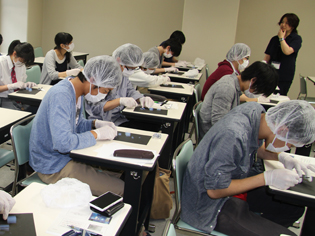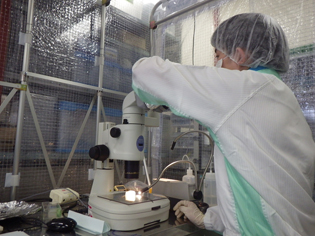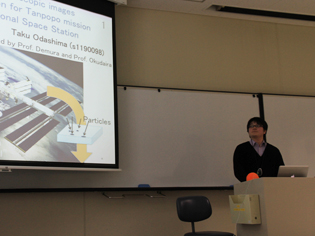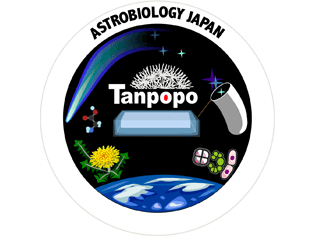Early in the morning of Wednesday, April 15, 2015 (JST), the SpaceX Dragon CRS-6 commercial cargo rocket launched from the United States towards the International Space Station carrying experimental equipment for the "Tanpopo (dandelion)" astrobiology mission.
See the following sites for details on the Tanpopo mission and information on the launch.
The Tanpopo mission involved 26 universities and research institutions from around Japan, including the Tokyo University of Pharmacy and Life Sciences and JAXA, and has involved members from the University of Aizu since it was in the working group stage.
One of the experimental themes of the Tanpopo mission is to use a special material called aerogel on the International Space Station to capture space dust and bring it back to Earth for analysis. UoA Associate Professors Kyoko Okudaira and Yuichi Yaguchi, as well as Prof. Yaguchi's graduate student Shinya Sato helped to develop the software tools used in the initial of analysis aerogel specimens used to collect space dust, and also worked on image analysis.

Silica aerogel (an extremely low-density material used to capture space dust): this aerogel was created by the Kawai Laboratory at Chiba University. The shape and density of the aerogel used in the Tanpopo mission differs.
Further, in the annual Student Cooperative Class Project (SCCP) "JAXA International Space Station Tanpopo Project," undergraduate students got a chance to tackle issues related to the mission as a form of project-based learning (PBL).
Experiments on the ISS is scheduled in July.


In Associate Professor Okudaira's SCCP class, students learn the difficulty of cutting aerogel by hand. (left) A UoA graduate student works to take photos in JAXA clean room. (right)


Graduate thesis presentation on the Tanpopo mission (left), The decal of the Tanpopo mission (right)


